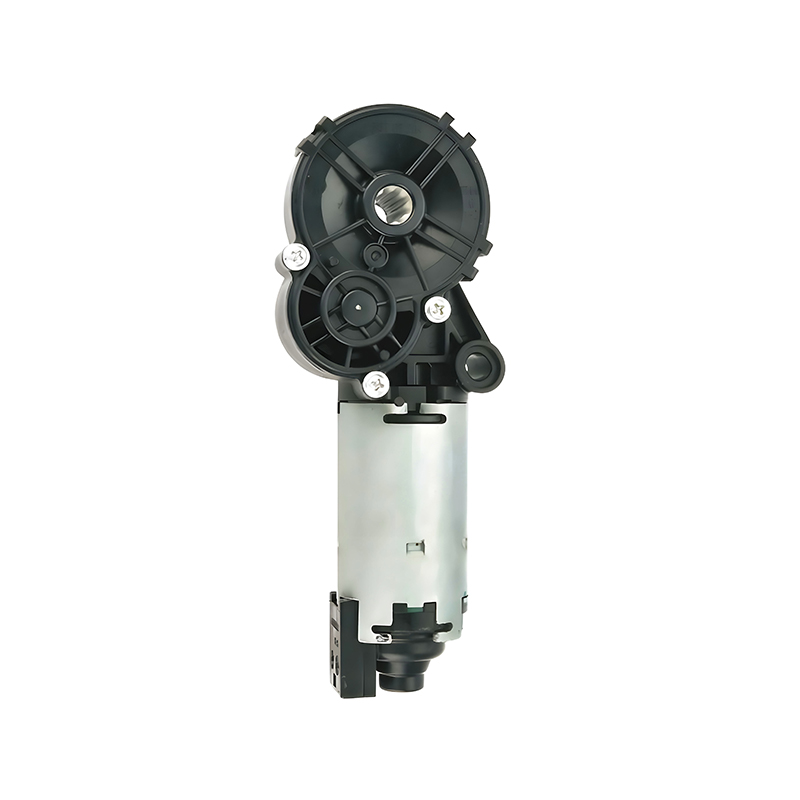In the automotive industry, the design of seat adjustment mechanisms plays a crucial role in driver and passenger comfort. Among these, the seat slide motor stands out as a key component that enables smooth forward and backward movement of car seats. Recently, there has been a focus on optimizing seat slide motors for short travel lengths, particularly to address compact interior spaces and enhance precision in seat positioning. This development offers practical benefits without compromising the performance expected from a car power seat motor.

A seat slide motor optimized for short travel lengths is designed to accommodate vehicles where space is limited, but adjustment functionality remains essential. Unlike traditional motors built for longer travel distances, these motors provide a refined response within a reduced movement range. This allows for efficient seat positioning even in compact cabins. For manufacturers, this innovation means they can maintain or improve passenger comfort while fitting into the tight constraints of modern car interiors.
The significance of the car power seat motor extends beyond just movement; it must offer reliable torque and consistent operation throughout its lifespan. Optimizing the seat slide motor for short travel lengths involves adjusting gear ratios, motor size, and control algorithms to ensure smooth operation. A carefully calibrated motor can deliver the necessary force to move the seat accurately without producing excessive noise or vibration. This balance contributes to a better overall user experience when adjusting the car seat.
While discussing seat slide motors, it is helpful to draw parallels with another automotive component: the sliding window motor. Both devices share common engineering challenges, such as limited installation space, durability requirements, and smooth operation. The sliding window motor, responsible for moving vehicle windows up and down, is similarly being refined to operate efficiently within compact frames. Like the seat slide motor, the sliding window motor must balance power and size, ensuring that it fits seamlessly into the vehicle's structure while performing reliably.
One important aspect of optimizing the seat slide motor for short travel lengths is ensuring that it integrates well with the car's electronic control systems. Modern vehicles often include memory functions and programmable seating positions, which require precise and repeatable motor movements. The car's power seat motor must be capable of responding to these commands accurately, allowing drivers to save and recall preferred seat positions without delay. Improvements in motor control techniques have contributed to making these systems more responsive and durable over time.
The design considerations for the sliding window motor have also evolved in tandem with these trends. As vehicle interiors become more compact, the need for motors that can function reliably in smaller spaces grows. Manufacturers are applying similar engineering principles to both sliding window motors and car power seat motors. For example, reducing the motor's physical footprint while maintaining output torque ensures that these components fit into increasingly compact door panels or seat frames.
Another factor influencing the optimization of seat slide motors is the growing emphasis on energy efficiency. Electric vehicle adoption and stricter fuel economy regulations have driven manufacturers to seek motors that consume less power during operation. A seat slide motor optimized for short travel lengths often benefits from reduced energy usage due to shorter active times and more efficient motor designs. This helps reduce the overall electrical load on the vehicle, contributing to better energy management.
In terms of durability, both car power seat motors and sliding window motors face the challenge of performing consistently through thousands of cycles. The repeated movement of seats and windows means that motors must resist wear, heat buildup, and environmental factors such as moisture and dust. The optimization process for short travel length motors includes selecting materials and components that extend service life while maintaining compact dimensions. This balance helps to avoid the need for frequent repairs or replacements, improving vehicle reliability.
In practice, drivers benefit from the refined control offered by an optimized seat slide motor. The ability to make precise adjustments in a shorter travel range allows for quicker and more comfortable positioning. For example, in urban cars with limited cabin space, the motor ensures that the seat can be moved efficiently without requiring excessive effort or long adjustment times. This improves convenience and safety, as a proper seating position contributes to better vehicle control.
Similarly, sliding window motors optimized for smaller spaces allow for quieter and smoother window operation, enhancing the overall driving experience. The connection between the development of these two types of motors highlights the broader trend in automotive design toward compact, efficient, and user-friendly components.
In conclusion, the seat slide motor optimized for short travel lengths represents a thoughtful response to evolving vehicle design requirements. By focusing on precise control, compactness, durability, and energy efficiency, these motors contribute to improved comfort and functionality in modern cars. The shared engineering principles with sliding window motors reflect a coordinated effort to enhance multiple vehicle systems within the constraints of limited space. As automotive interiors continue to evolve, innovations like these will play a key role in shaping driver and passenger experiences.
Your email address will not be published. Required field are marked*